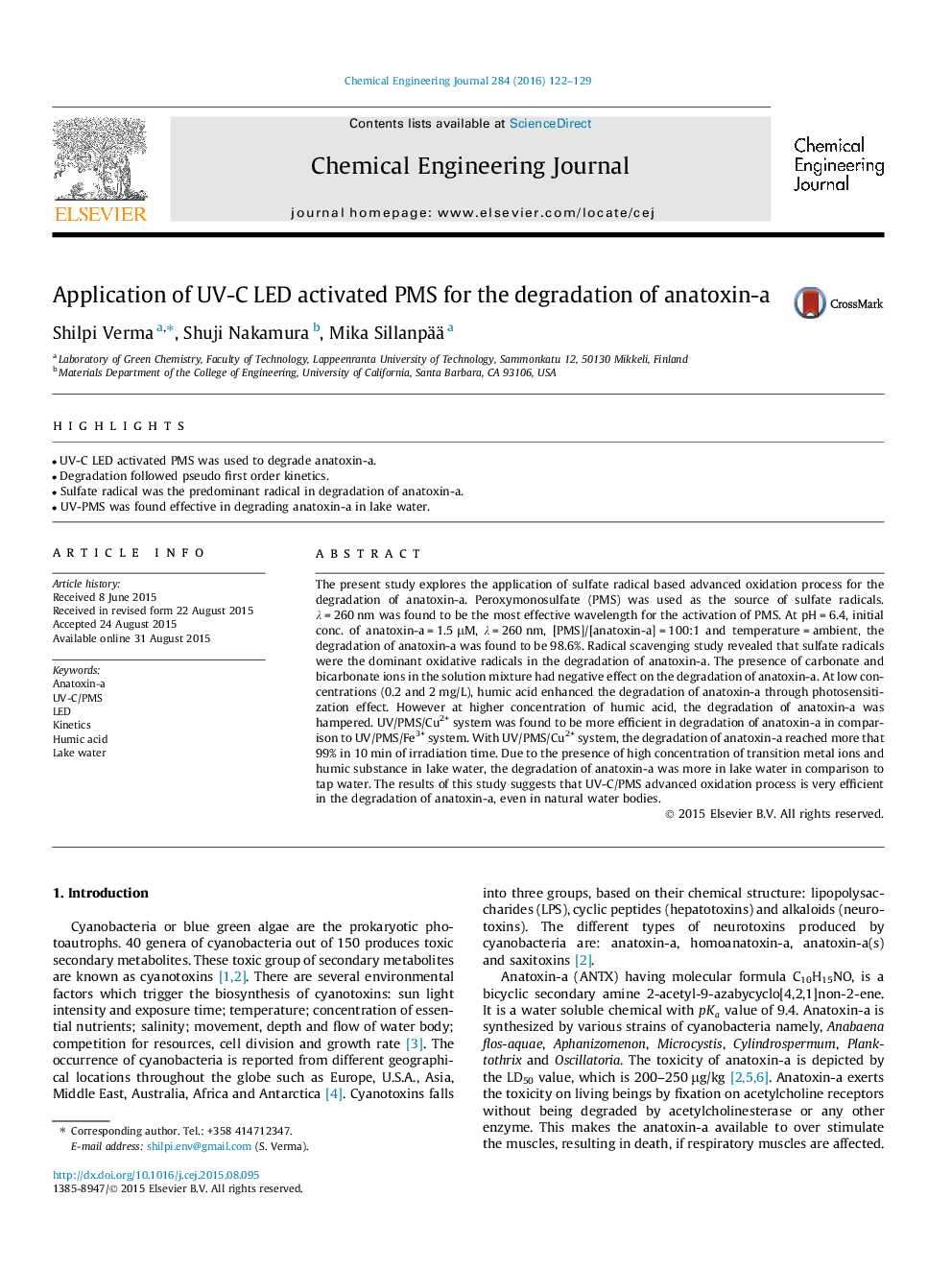| Article ID | Journal | Published Year | Pages | File Type |
|---|---|---|---|---|
| 145958 | Chemical Engineering Journal | 2016 | 8 Pages |
•UV-C LED activated PMS was used to degrade anatoxin-a.•Degradation followed pseudo first order kinetics.•Sulfate radical was the predominant radical in degradation of anatoxin-a.•UV-PMS was found effective in degrading anatoxin-a in lake water.
The present study explores the application of sulfate radical based advanced oxidation process for the degradation of anatoxin-a. Peroxymonosulfate (PMS) was used as the source of sulfate radicals. λ = 260 nm was found to be the most effective wavelength for the activation of PMS. At pH = 6.4, initial conc. of anatoxin-a = 1.5 μM, λ = 260 nm, [PMS]/[anatoxin-a] = 100:1 and temperature = ambient, the degradation of anatoxin-a was found to be 98.6%. Radical scavenging study revealed that sulfate radicals were the dominant oxidative radicals in the degradation of anatoxin-a. The presence of carbonate and bicarbonate ions in the solution mixture had negative effect on the degradation of anatoxin-a. At low concentrations (0.2 and 2 mg/L), humic acid enhanced the degradation of anatoxin-a through photosensitization effect. However at higher concentration of humic acid, the degradation of anatoxin-a was hampered. UV/PMS/Cu2+ system was found to be more efficient in degradation of anatoxin-a in comparison to UV/PMS/Fe3+ system. With UV/PMS/Cu2+ system, the degradation of anatoxin-a reached more that 99% in 10 min of irradiation time. Due to the presence of high concentration of transition metal ions and humic substance in lake water, the degradation of anatoxin-a was more in lake water in comparison to tap water. The results of this study suggests that UV-C/PMS advanced oxidation process is very efficient in the degradation of anatoxin-a, even in natural water bodies.
